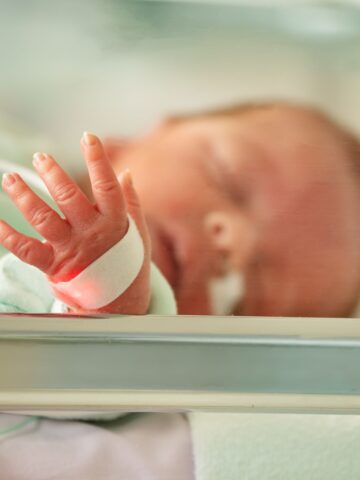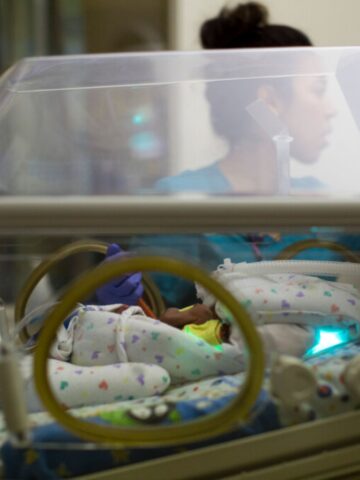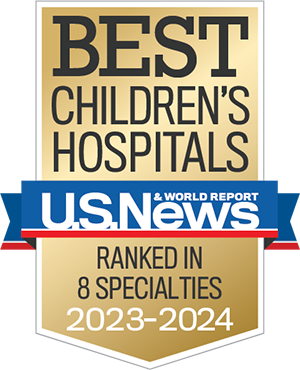Sophia Wise, a hibiscus hair clip holding back her curly dark-brown hair, couldn’t have created a more joyful, bright, and merry room.
There’s a rainbow mural on a wall and colorful LED lights on another.
A clothes hamper is fashioned to look like an ice cream cone.
One chair is covered in faux white fur.
Born with spina bifida, Sophia’s sunny space and disposition give no clue to her challenging childhood.
She has had, among other procedures, four spinal surgeries, a major urological operation that required a six-month recovery, a shunt implant and revision to treat hydrocephalus, and metal plates inserted in her knees to maintain mobility.
Sophia was suffering for several months with symptoms of a tethered spinal cord before her latest pediatric Spine Center surgery on New Year’s Eve 2024. Tethered cord syndrome occurs when the spinal cord is held taut at the base of the spinal canal in a growing child.
Sophia now is back better than ever enjoying an active life – riding horses, dancing, fishing, playing wheelchair tennis, and enjoying more control over a congenital condition that, among other issues, was causing increased bowel and bladder dysfunction.
“Nothing’s going to bring me down,” says a defiantly optimistic Sophia, who recently celebrated her Sweet Sixteenth.
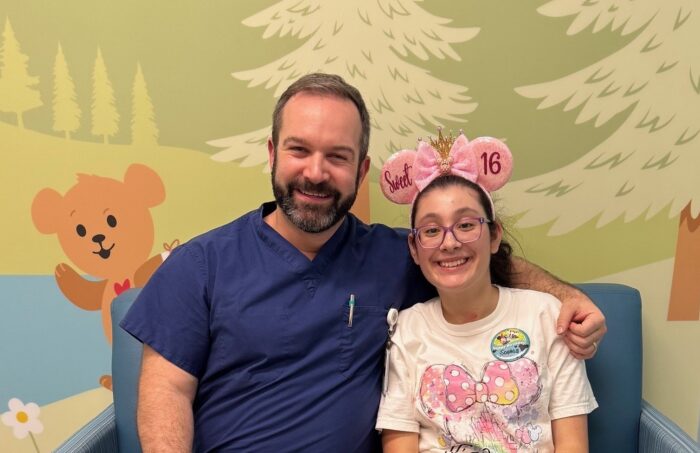
Changing the trajectory
Pediatric neurosurgeon Dr. Aaron Yengo-Kahn, who performed the most recent surgery on Sophia, says the opportunity to change the trajectory of a child’s life for the better is what motivates him.
Since joining CHOC in August 2024, he has dramatically improved the lives of numerous kids like Sophia. In several cases, he has teamed up with internationally recognized pediatric orthopedic surgeon Dr. Afshin Aminian, medical director of the Orthopedic Institute at CHOC, part of Rady Children’s Health.
Together, the two have tackled some of the most complex cases of kids with spinal deformities — not only correcting structural alignment but also improving neurological functioning.
Their partnership, uncommon for a pediatric hospital, is distinguishing CHOC as a provider of the latest and effective treatments for spinal conditions.
“The outcomes are better when both Dr. Aminian and I work together,” Dr. Yengo-Kahn says.
Both are highly skilled practitioners of surgeries that Yengo-Kahn, who broke some bones snowboarding in his native northeast U.S., likens to “extremely high-risk carpentry.”
Says Dr. Aminian: “You can’t take spines apart and put them back together because you have to respect the integrity of the spinal cord. When you do these complex surgeries, you have to work around areas that are sensitive to neurological and vascular injury. When it comes to these cases, having two people with expertise makes the surgeries not only more efficient, but safer.”

Tremendous outcomes
Since teaming up, Dr. Yengo-Kahn and Dr. Aminian have enjoyed tremendous outcomes with more than 10 patients receiving major surgery, and many more benefiting from the increased collaboration between the surgeons. Working closely together, the doctors say, has enhanced communication, speeding up referrals and workups for spine-related disorders.
“Even though it’s a relatively small number of patients that we have done these huge surgeries on together, we are constantly sharing images and patients to find the best solutions in a timely manner,” Dr. Yengo-Kahn says.
He holds a clinic spot to ensure that any neurologic problems identified in the orthopedic clinic can be quickly evaluated and addressed in his clinic.
“Help is just a quick text or phone call away.”
He and Dr. Aminian have performed a few combined scoliosis corrections and a palliative rhizotomy, a surgical procedure aimed at reducing spasticity and chronic pain by cutting specific nerve fibers.
Four patients required partial or complete removal of vertebrae to achieve effective corrections or to improve spinal cord function.
One felt his legs go wobbly and numb when skateboarding. Dr. Aminian and Dr. Yengo-Kahn corrected his condition — congenital scoliosis with thoracic myelopathy (compression of the spinal cord) — by removing the bones in his spine that were pushing against his spinal cord.
The teenager, with rods and screw in his back, is working out again.

Industry partner
Partnering with industry leaders such as Medtronic, CHOC is one of the pioneers in the design of custom implants and use of 3D pre-operative planning and modeling for orthopedic patients.
“There are a few other pediatric orthopedic centers like us,” Dr. Aminian said, “but we’re one of very few that use engineers in the design of our surgical implants and how we prepare for surgeries.”
Often before operating on some patients with complex spine issues, Dr. Aminian and Yengo-Kahn treat them using halogravity traction, which gently stretches the spine by using a metal ring, or halo. It fits around the head and connects to a weighted pulley system to carefully lift the head and neck upwards to slowly and safely correct the deformity prior to surgery.
Another patient with cerebral palsy suffered from both severe tightness in his legs and a painful 90-degree deformity in his spine. The surgeons were able to correct his deformity and carefully cut nerves in his legs to allow his legs to relax. Now he can sit comfortably in a wheelchair instead of lying in a reclined position.
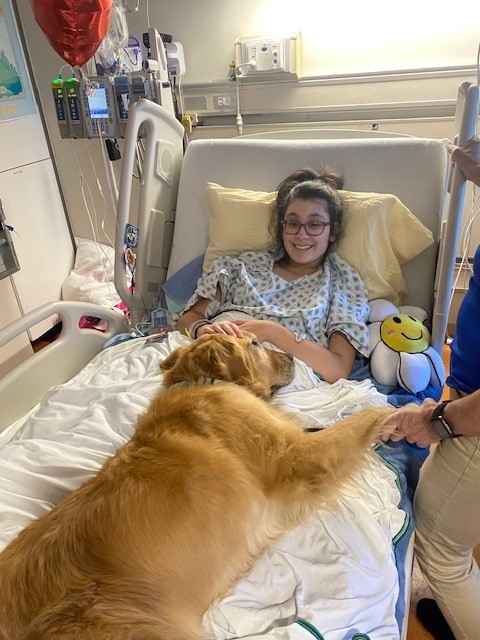
A newer procedure
Immediately after she was born, Sophia underwent neurosurgical repair on her spinal cord.
She also needed a shunt for hydrocephalus.
Before she turned 10, Sophia had two tethered-cord release surgeries and a Chiari decompression, a procedure in which bone at the back of the skull is removed to create space for the brain.
At 11, Sophia underwent the complex urological surgery performed by Dr. Elias Wehbi and Dr. Antoine Khoury that gave her increased independence in toileting.
Because she was still growing, she required the third surgery for tethered cord syndrome on Dec. 31, 2024. Sophia’s symptoms included tripping, loss of balance, shooting pain and tingling in her legs, bladder spasms, and bowel incontinence.
In her latest surgery, Dr. Yengo-Kahn performed a newer procedure that involved taking a vertebra out of her spine to make it shorter. A common alternative technique involves snipping away at the scarring around the spinal cord until it falls back into place. That technique, however, has an elevated risk of neurological problems.
Sophia’s latest surgery lasted more than eight hours.
“It was one of the hardest ones I’ve gone through,” she says.
Recovery took six months. Sophia had to relearn how to sit, stand, and walk.
The likelihood of Sophia having to undergo another surgery for tethered cord syndrome is low because she has stopped growing, Dr. Yengo-Kahn says. But he remains vigilant.
Celebrate yourself
To celebrate her latest recovery, Sophia and her parents, Tané and Doug, went to Hawaii where Sophia enjoyed ziplining and other activities.
“I’m healthy and I’m happy, and my endurance improves every day,” says Sophia, who wears leg braces and still sees a physical therapist for core and hip strengthening.
Sophia’s parents are amazed at her resilience and cheerful outlook throughout a childhood that has been filled with challenges.
“She’s so tough and she’s been through so much before,” Doug says. “Her resolve? You can’t question it.”
Tané, a registered nurse, praised her daughter’s care team.
“Dr. Yengo-Kahn is just exceptional,” she says. “He’s incredible and brings expertise and unwavering commitment to the children he cares for. He is so brilliant and has something wonderful to offer.”
Upon her discharge from CHOC, Sophia wrote thank-you notes to everyone who cared for her.
She was especially appreciative of the Child Life team and all the music, art, and pet therapy they provided.
She credits her parents and friends and faith for getting her to this point.
“They never left my side, and CHOC is like a second family to me,” Sophia says.
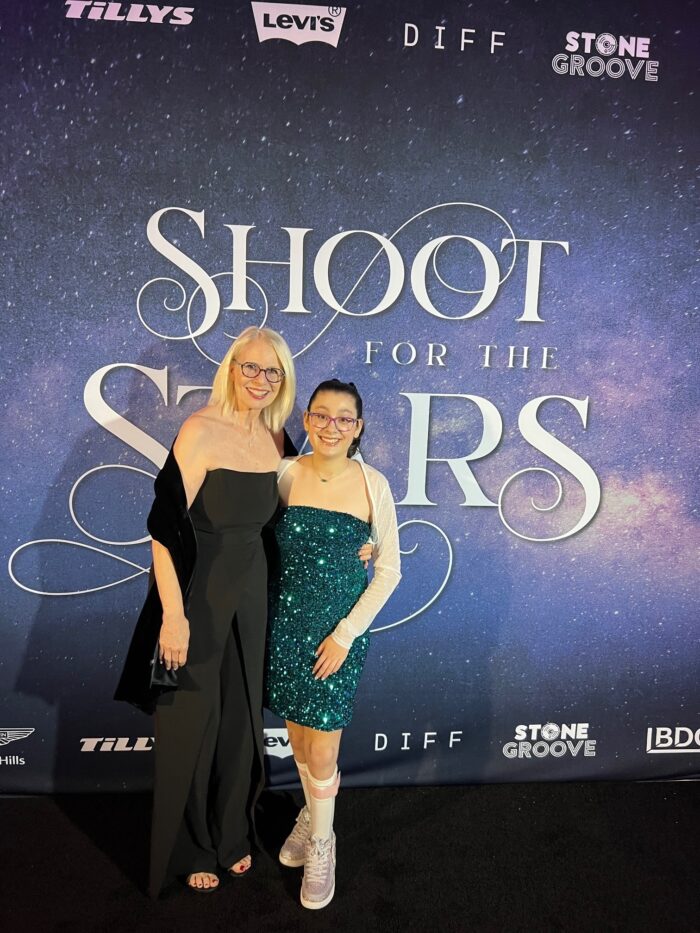
Giving back
Sophia participates in Tilly’s Life Center, a social-emotional learning program for teens that is active at CHOC and other organizations as well as schools. She’s a member of meetings that teach life skills to build confidence, inspire compassion, and encourage adolescents to pursue their dreams.
Determined to give back to others, Sophia told her story as a teen ambassador at Tilly’s Life Center’s recent “Shoot for the Stars” event.
“I can’t change my diagnosis,” Sophia told the assembled, “but I choose not to be ruled by it.”
Asked what she would tell other children and teens who face challenging health journeys, she says:
“Don’t give up. Have patience with yourself. It’s going to be extremely rough at times, but it’s going to be OK. It’s OK to cry and have bad days. Don’t apologize for being you. Accept your differences.”
Sophia didn’t forget to send Dr. Yengo-Kahn a thank-you note.
Written in three colored markers and adorned with drawings of yellow stars, it hangs in his office.
It reads, in part:
You are so very smart in your work…I’m doing so much better!! I am so glad you were able to help me. I do really admire you; you have made such a difference in my life!!!!!
Your friend…and patient, Sophia!
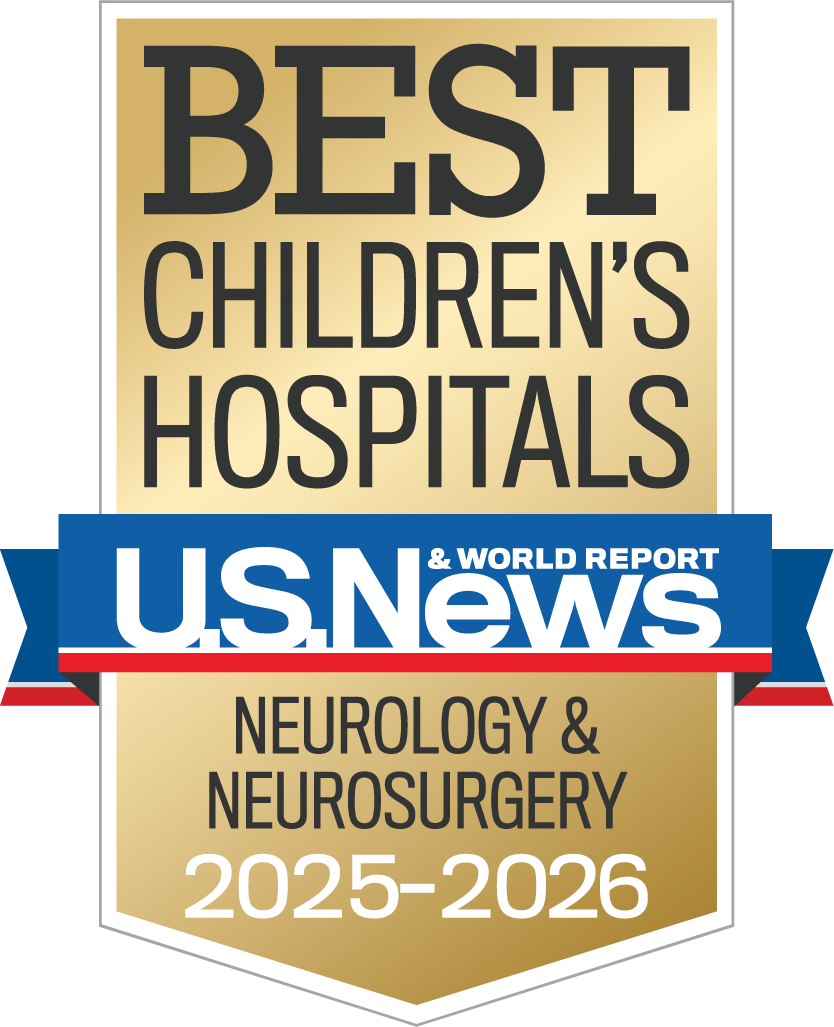
CHOC Hospital was named one of the nation’s best children’s hospitals by U.S. News & World Report in its 2025-26 Best Children’s Hospitals rankings and ranked in the neurology/neurosurgery specialty.
Learn more about CHOC’s Orthopaedic and Sports Medicine Services
Our team of board-certified specialists and orthopaedics-trained staff provide a full spectrum of care for disorders of the bones, joints, ligaments, tendons and muscles.


